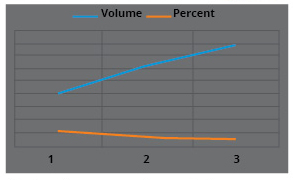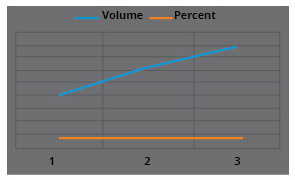New Year’s Resolution: Reduce Returns
By Jack DeButts, Reverse Logistics Association
Like reducing weight and going to the gym, reducing returns is a great resolution.
And like your waistline, in returns world, you have to look at the numbers. Starting a program that builds muscle and reduces body fat may not show results on the scale, but your body is stronger and healthier. The same is true for returns.
Volume Up, Percent Down: Your sales have increased, but you have properly trained your customer care team, developed an active user community, and this has led to a reduction in your percent of returns while increasing your returns volume over the previous year.
Volume Up, Percent Steady: Your sales are increasing (nice work!). If your sales on the front end increase 20%, it is reasonable to expect that all things being equal, you will have a 20% increase in returns, particularly if you have made no attempt to reduce your returns. This is most important for planning purposes. There are four primary reasons that companies do not address returns: 1) No executive champion; 2) No funding; 3) No resources; or 4) No time.
Different methods, different results
Effective returns management begins with a robust return’s management strategy. This is followed closely by product design, marketing and, of course, the sale. This time of year, many returns are for buyer remorse (Color/Fit/Did not need/Did not like/etc.). This is especially true of online purchases. An article in Fortune (Returns) magazine highlights this issue stating that over 30% of labor for many apparel retailers is spent in January when returns are at their peak. Fortune also mentions that almost 1 in 3 of purchases in the women’s fashion and shoes categories, bought online, are returned.


If you are shaking your head in despair, DON’T! There are practical ways to reduce returns, save sales, and build customer loyalty.
- Develop a robust returns strategy
- Build strong relationships with your OEM or Channel partners to develop best practices for returns management
- Train all customer facing team members on the product – sales and customer care!
- Document all the features and benefits of the product
- Ensure the product description is representative of the product shown online
- Give a 360 degree view and dimensions of online product, all around and up and down
- Ensure colors are accurate, not close, but as exact as possible
- Be sure if sized, that you have specifics. For example, does a small equal a particular size range, etc.
- Build a customer friendly community
- Build and monitor an FAQ area for your website
- Have a clear, published returns policy
- Follow and respond to social media
- Offer exchange first and advanced shipping/crediting
While there is a cost to managing returns, it is an important part of your business. The goal is to effectively manage the returns through the entire channel. A return is simply the way a customer tells you that they have a different need and, therefore, a new opportunity for you to build a relationship. This time of the year is challenging, but you don’t have to go it alone. Spinnaker has industry experts who can help you manage the post-holiday headaches, develop award winning returns management strategies and execute them flawlessly.
 Jack DeButts
Jack DeButtsJack DeButts is a senior executive with over 30 years of leadership experience in Global Operations, Reverse Supply Chain, and Medical Device Operations, Connecting partners internal and external. Mr. DeButts blends skill and passion leading teams and providing solutions that deliver: • P&L Results • Value to the customer • Benefit to the organization • Team recognition.